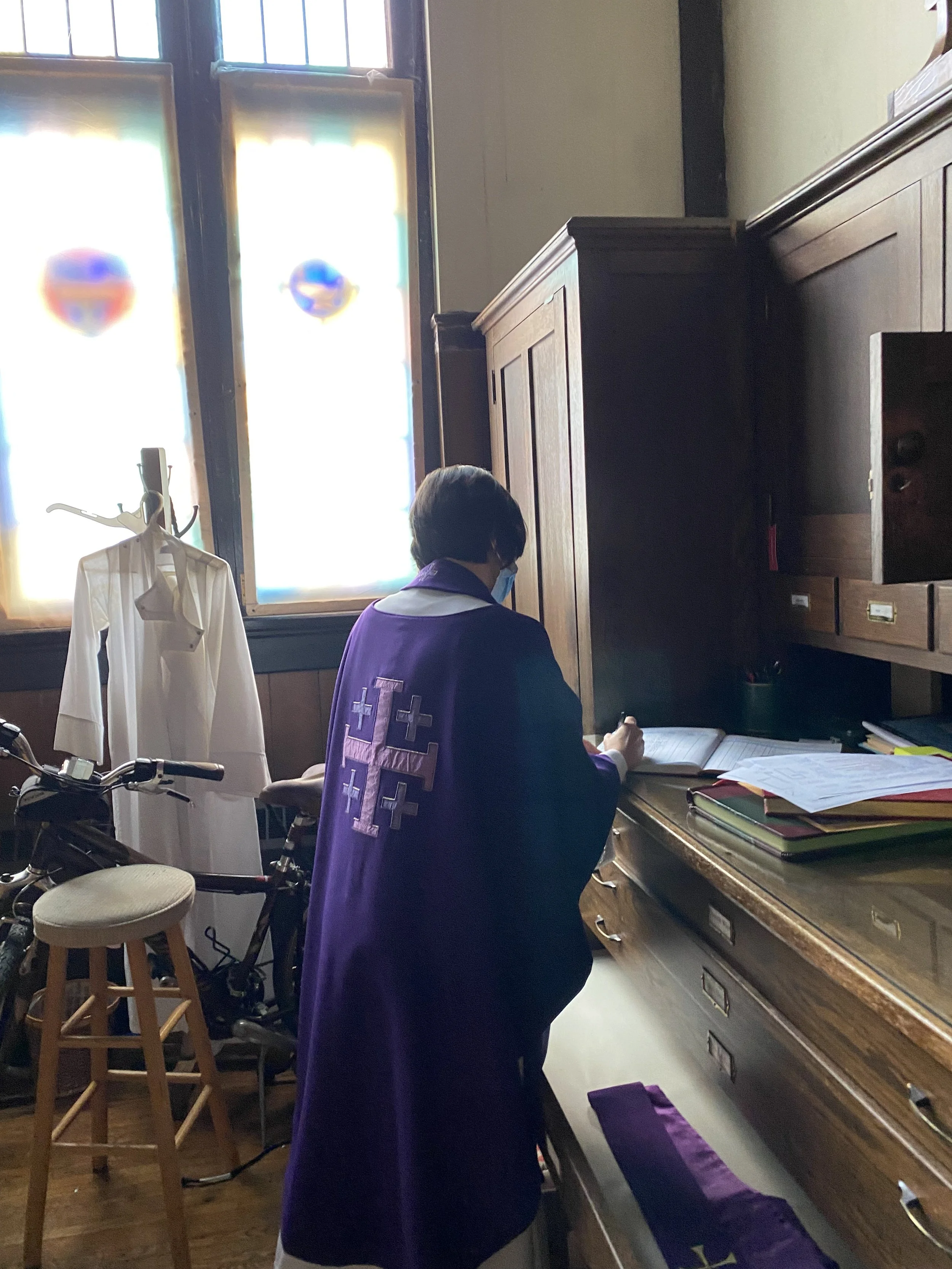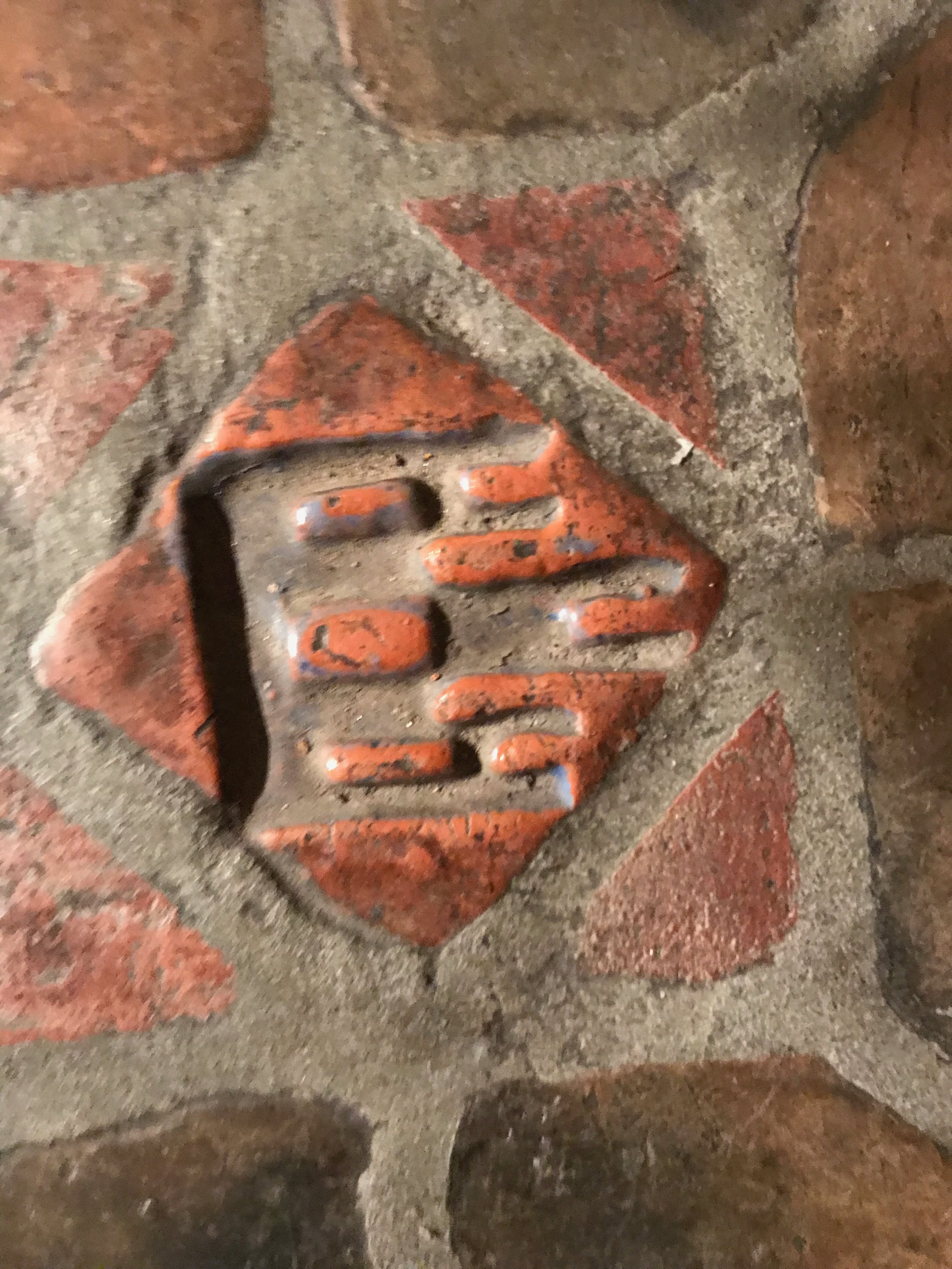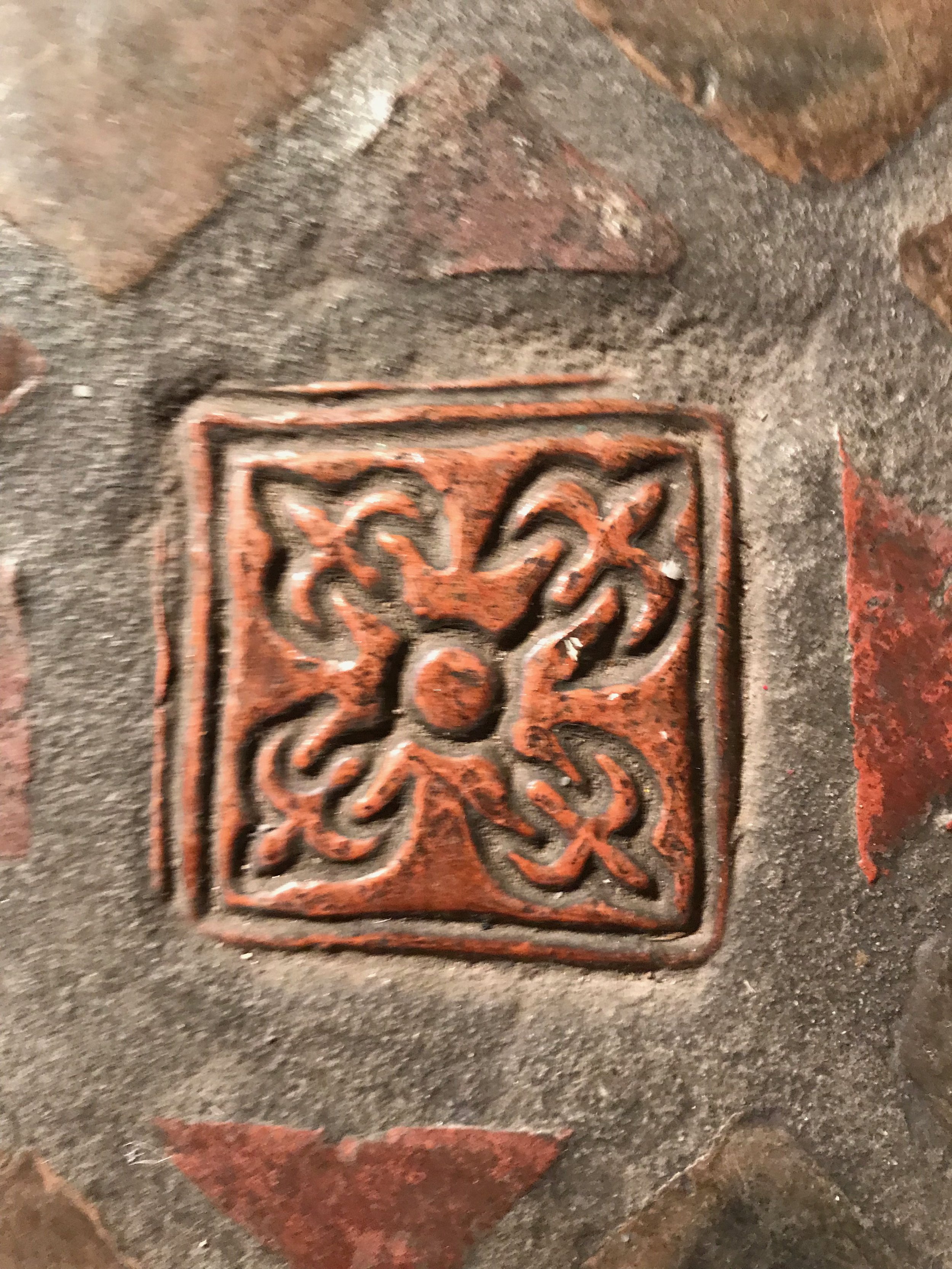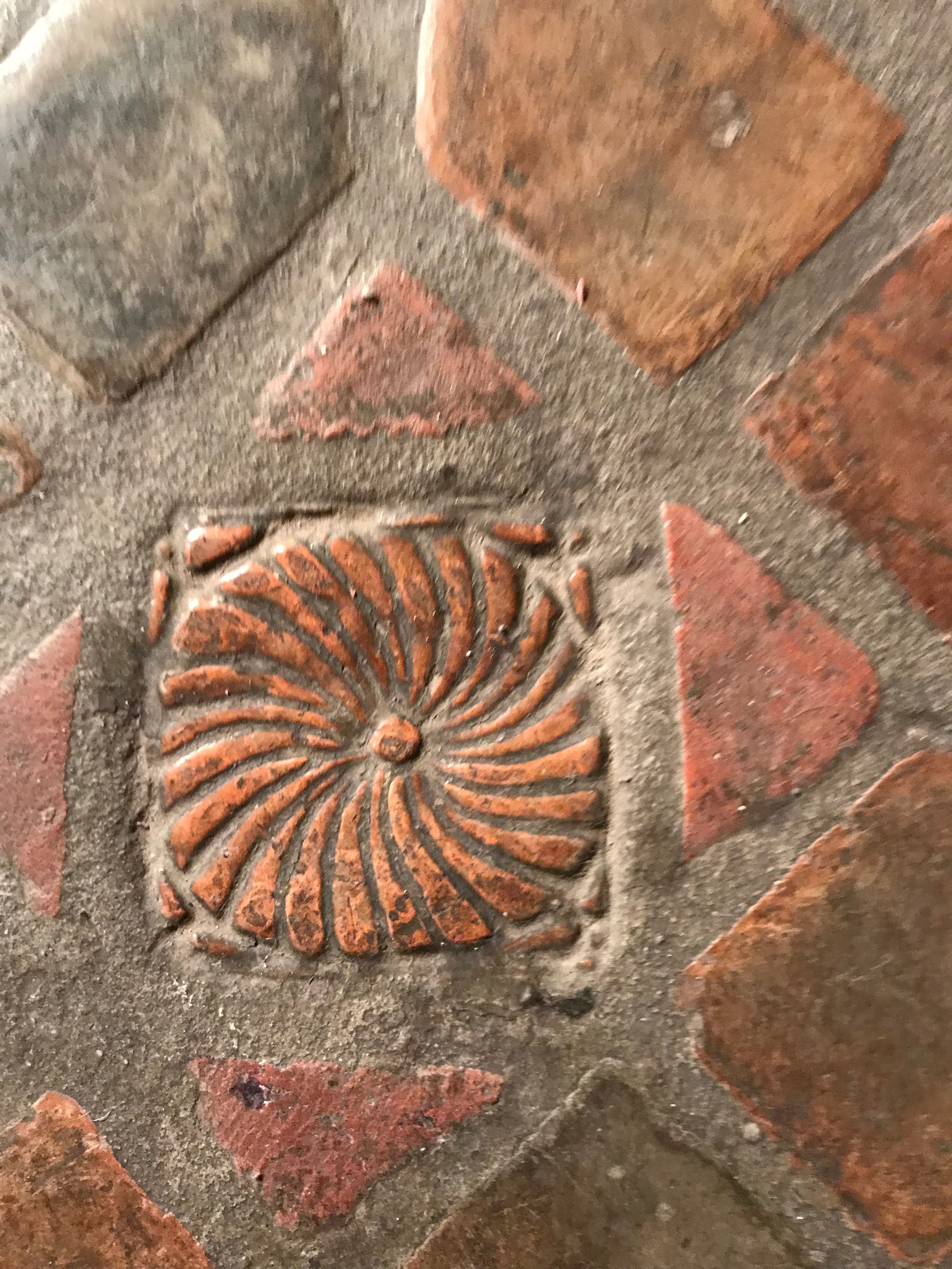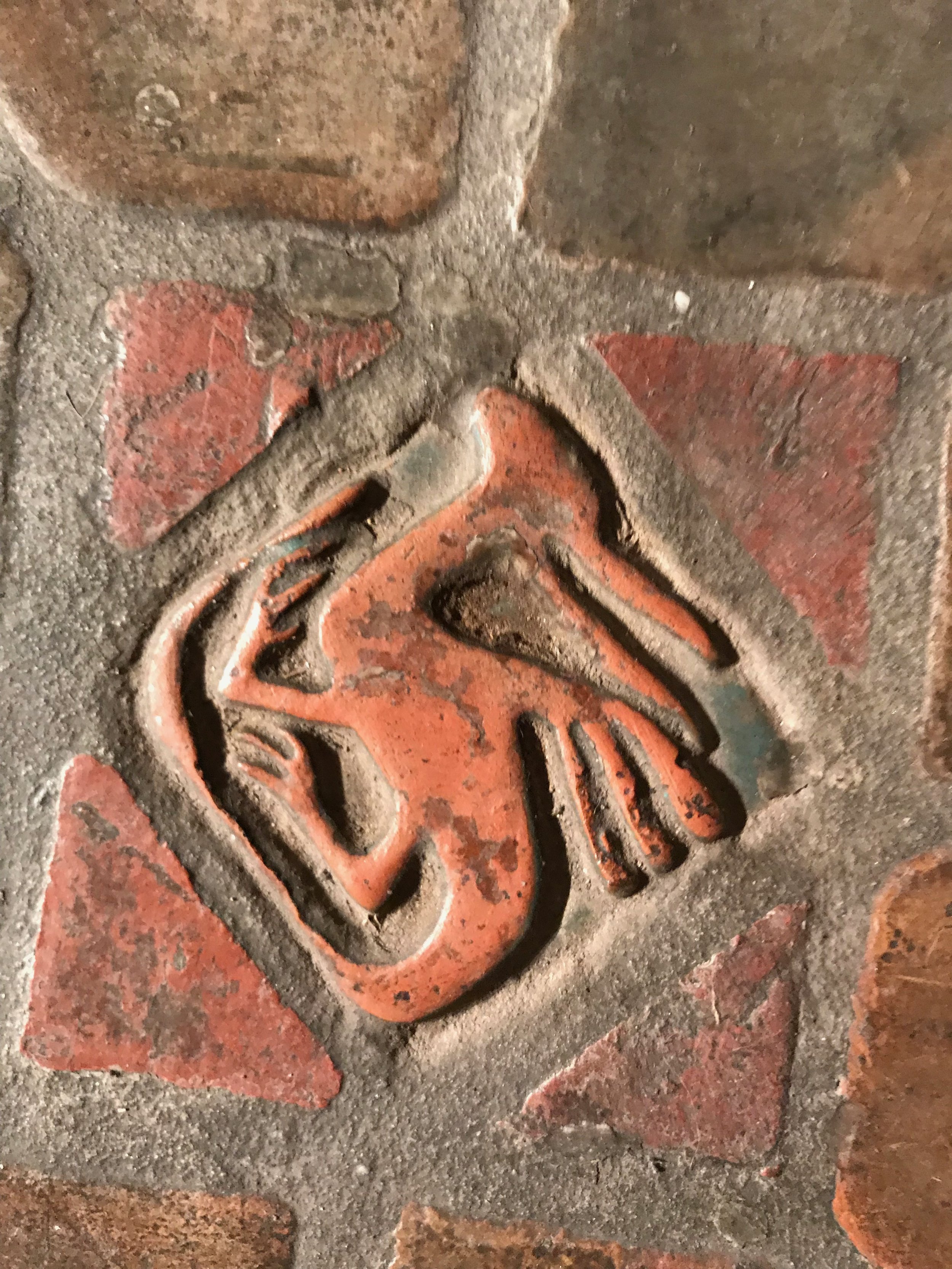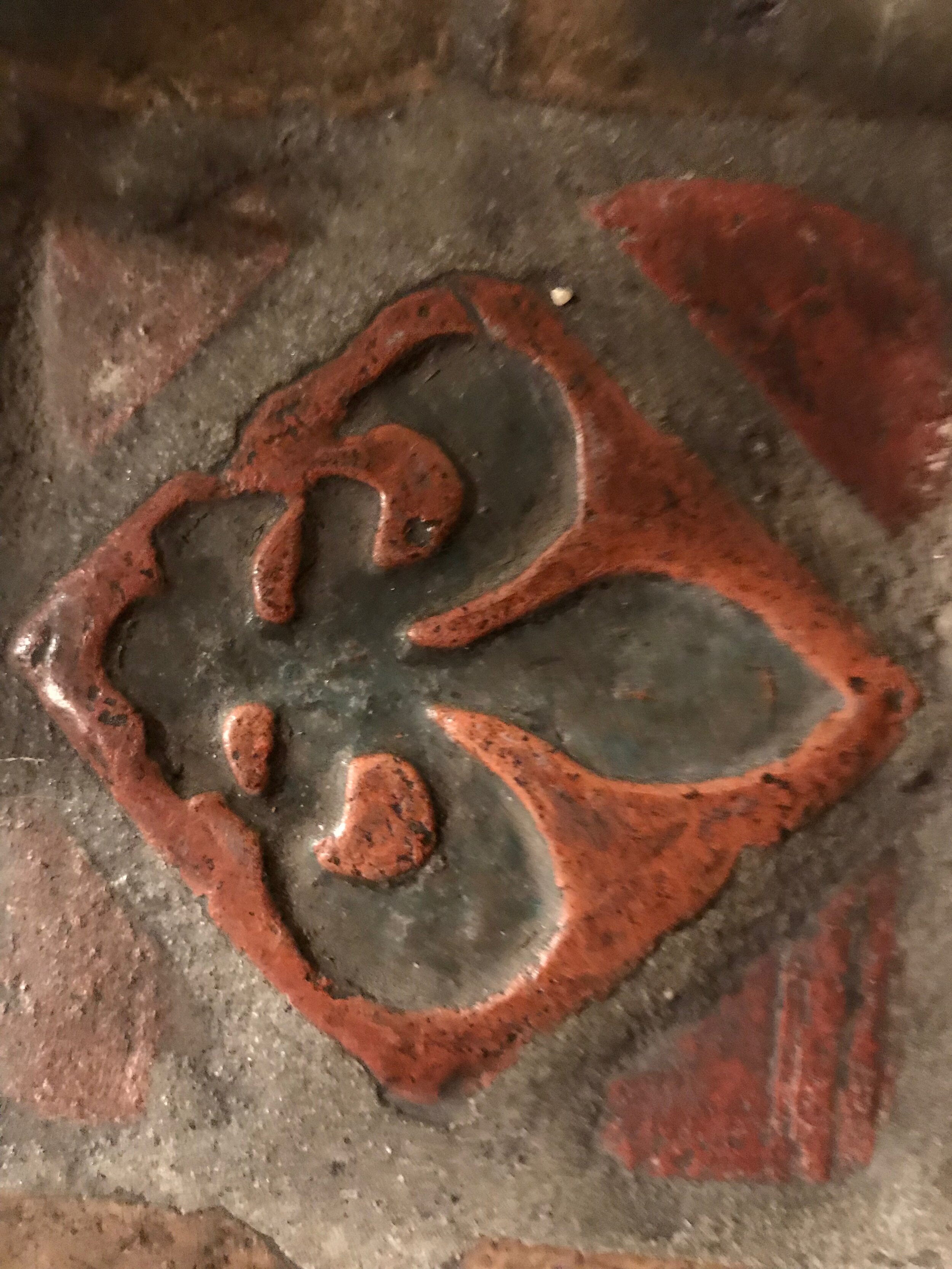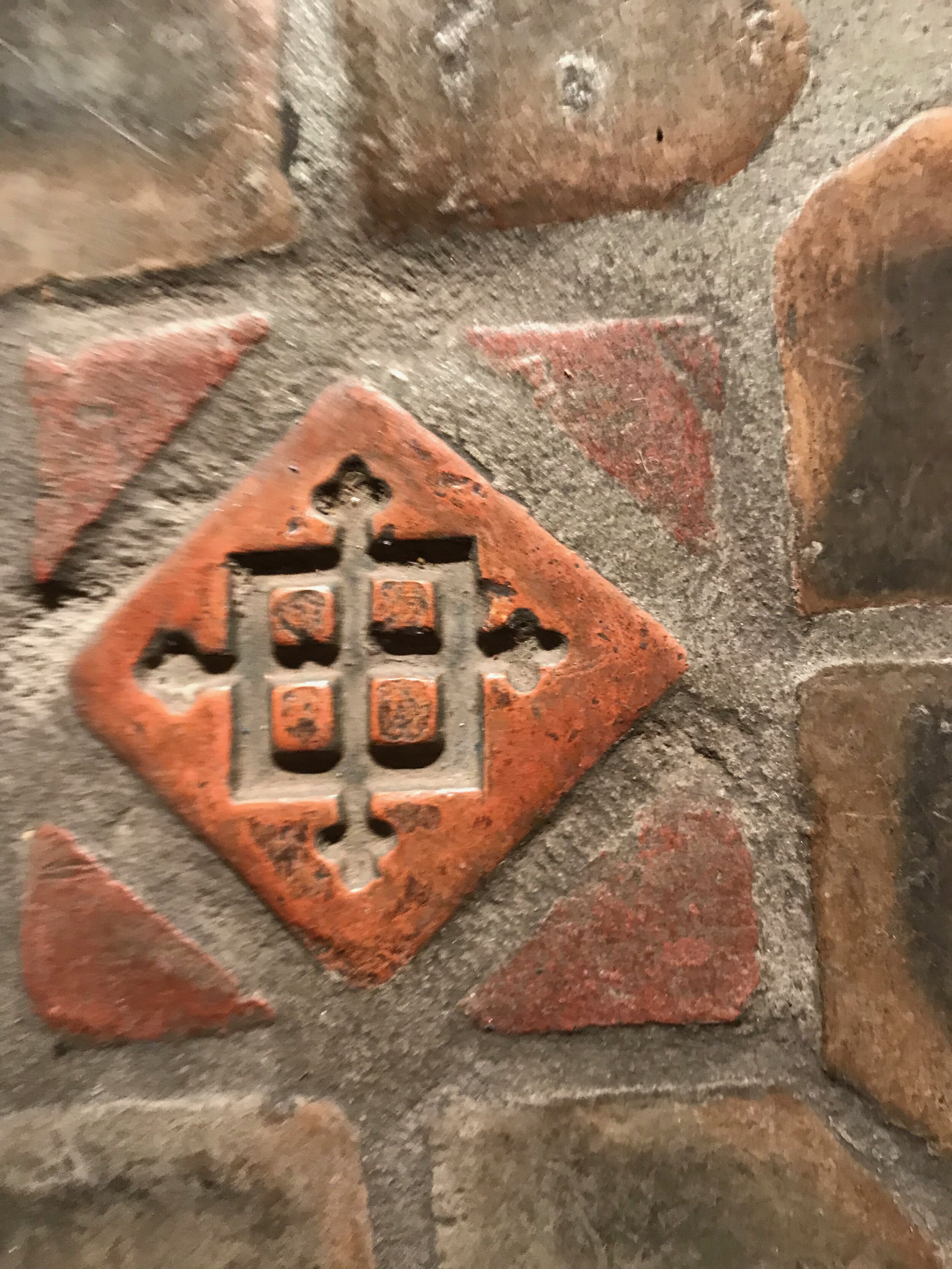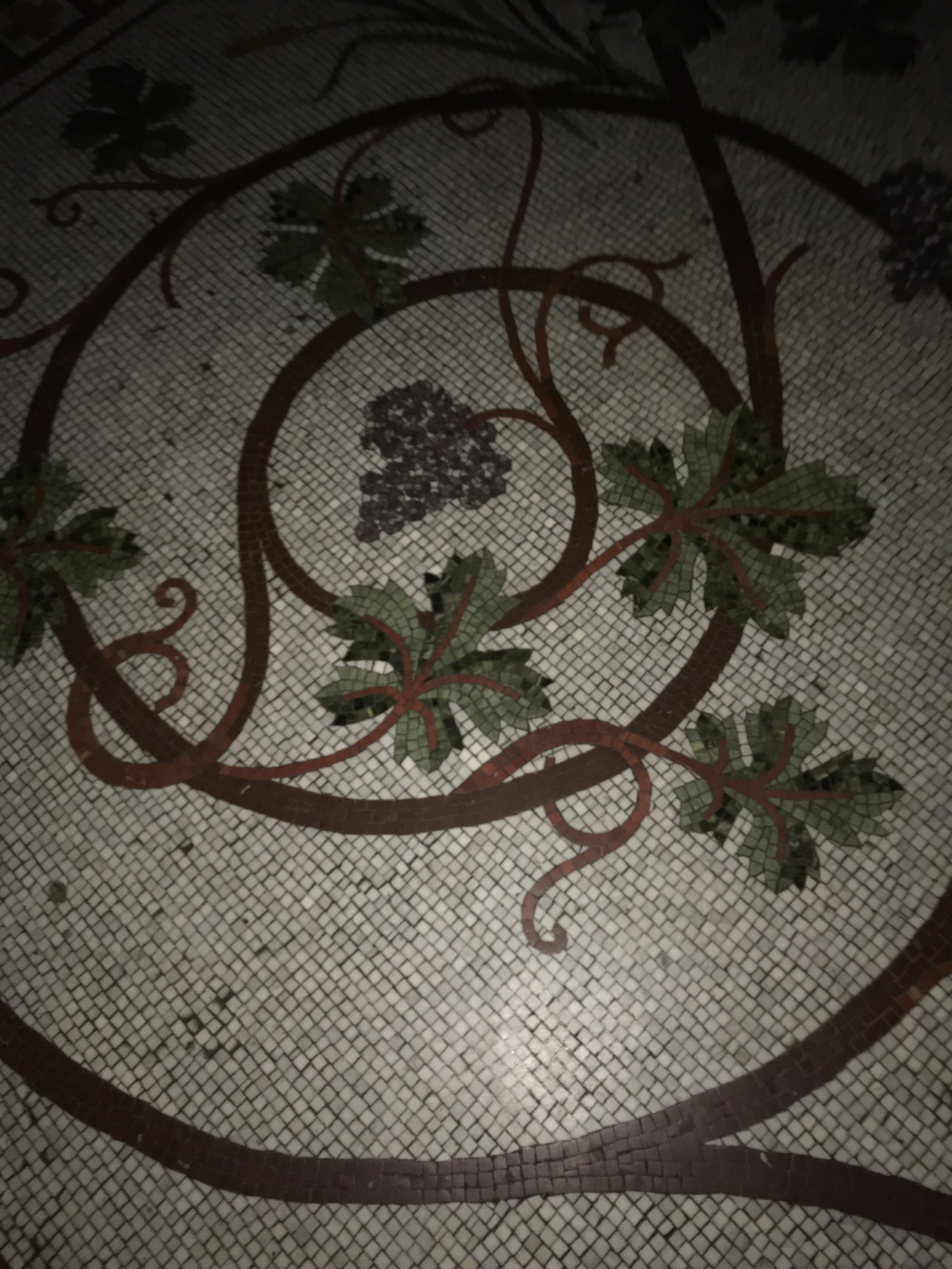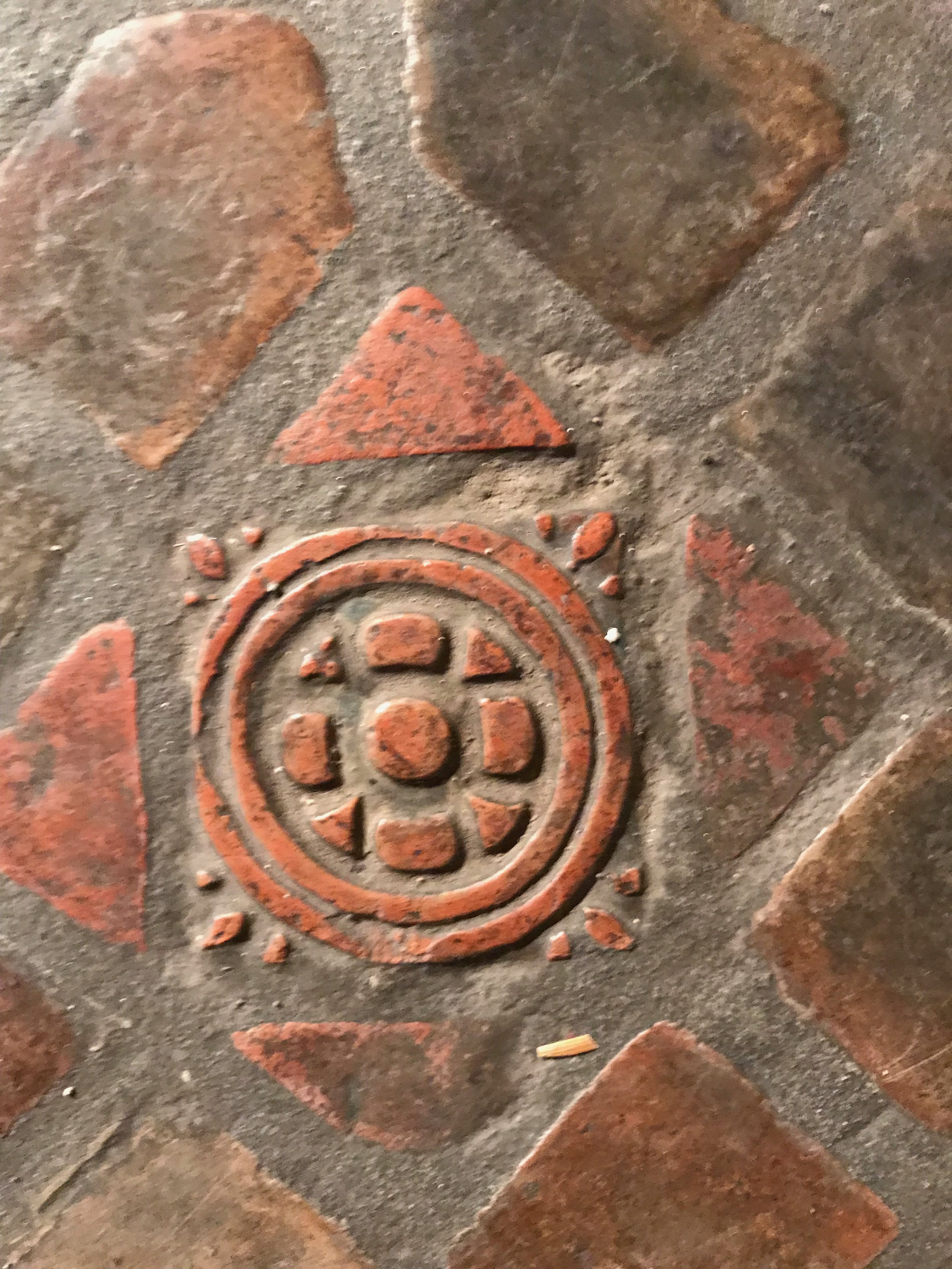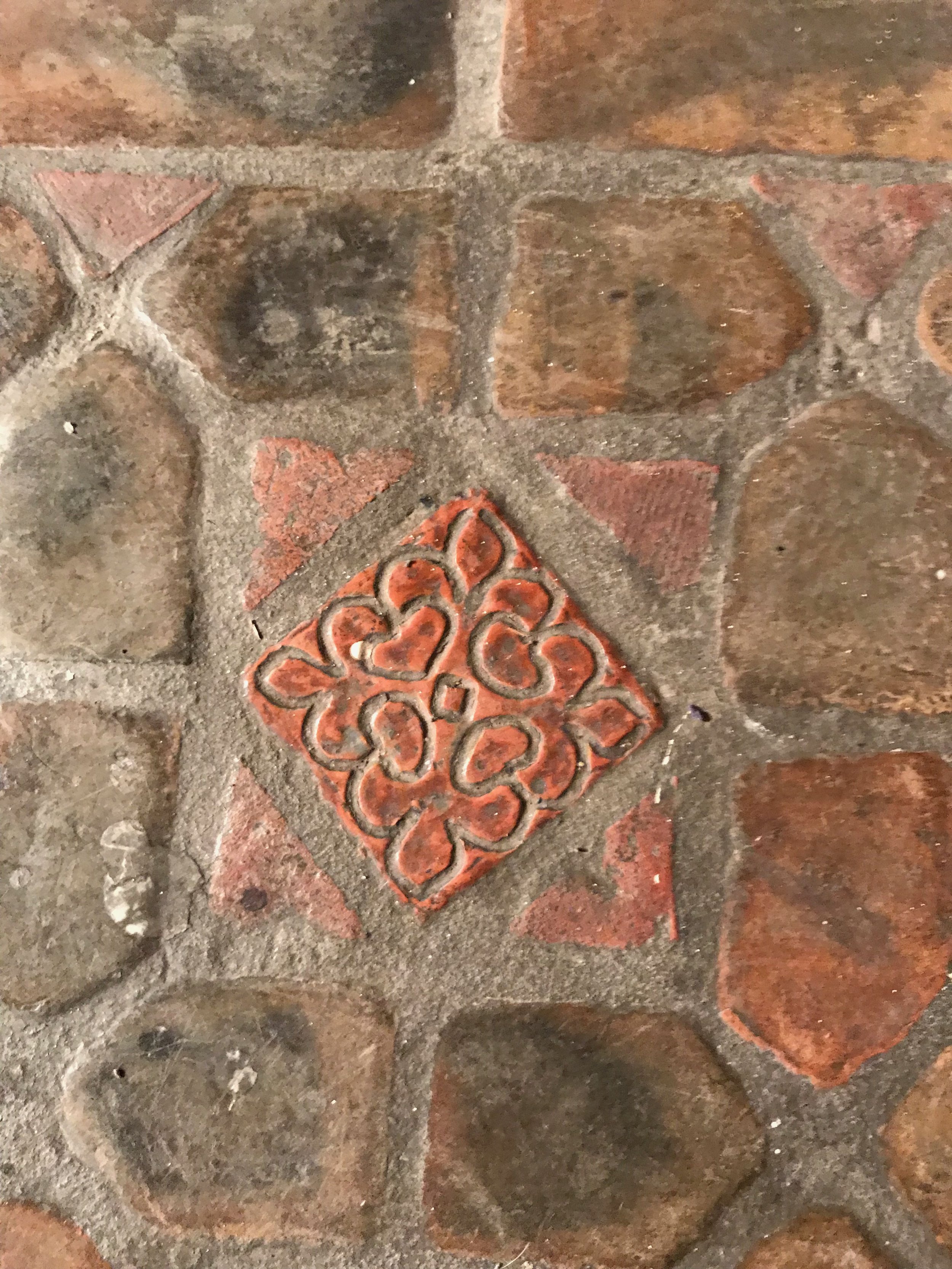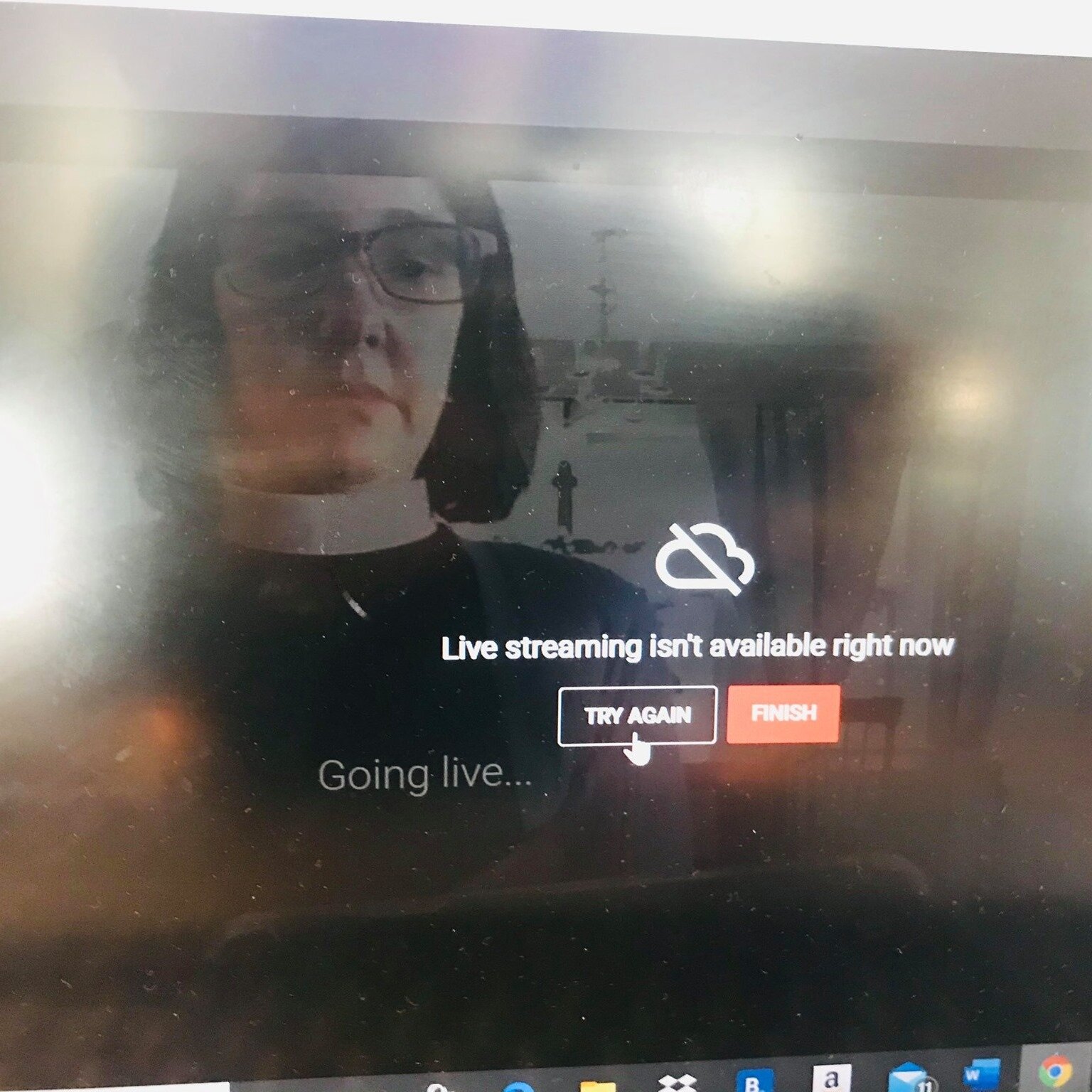Ruth’s Page
Seasonal thoughts:
A Note from the Rector
As I write these words, my lamp lit desk is an intersection of Advent and Christmas. Through the bay window on my left, ice skaters are circling the rink at Manhattan Square Park as the loudspeakers blast “Have a Holly Jolly Christmas.” Behind the chapel door (which I’ve propped open) across the hall to my right, the consort rehearses “Comfort, comfort ye my people” from the organ gallery across empty pews. It’s Christmas on my left, and Advent on my right. What, then, is the “festival” of our lessons and carols tonight? Christmas or Advent? In truth, it’s both.
Church people try to separate the two because each is a distinct season, a distinct experience. The act of separating Advent from Christmas is both necessary and impossible. Some of us use Advent to focus our yearning for God beyond Christmas day, if not as a refuge from holiday madness. But Advent, of course, is more than a hiding place from Christmas. Christmas can’t be hidden from Advent, not theologically, biblically, historically, eschatologically, spiritually, or even liturgically. Advent is for eternally travelling to Bethlehem, so we travel with the angels tonight ahead of the Christmas event, no less than the shepherds travelled with them at the event, and no less than the magi who followed the star after the event. Advent and Christmas flow into each other because God acts in human history in ways don’t fit with linear time.
Eric Milner- White, the dean of King’s College, Cambridge, came home from World War I alive. He reworked the original 1880 version of Lessons and Carols service to speak to the people of the trenches: to the survivors, to those died, and to their families. It was Christmas, but his heart was with the Advent people of Isaiah, walking in the darkness of war. He adapted the Festival of Nine Lessons and Carols, the one the world hears broadcast live from BBC every Christmas Eve, for those who walked in darkness but were yet to see a great light. Nine years later, when he introduced what an Advent service of lessons and Carols might mean, he wrote that it should “help us express the desire of all nations and ages,” the purpose of which should be “not to celebrate Christmas but to expect it.”
More than the birth of Jesus, Advent anticipates a new world order, the birth of a new “time” and “place” where God will reign with a peace that passes all understanding. Christmas anticipates the very same. The difference, if there is any, is what the longing looks like. In Advent, it is seen in human faces registering terror, if not resignation, to what has come upon them in devastation and exile. In Christmas, the longing is seen in the faces of the mother and infant as they behold each other for the first time. “Advent” and “Christmas” are simply the names for the wild, radiant longing that sleeps underneath our despair or resignation in the world as it is. (Either is also a good name for the slow awakening we feel when we realize this is not the world God wants for us, and there is more to come.)
As I write these words, there is Christmas celebration on the ice rink to my left, and Christmas expectation in the sanctuary on my right. Sometimes, we can’t keep the celebration separate from the expectation. If the Church should hope to shine Isaiah’s ever-ancient, ever-present light into the trenches of the present day, and should that light reach anyone who may be compelled to celebrate it, then we should rejoice. And even sing a Christmas carol or two. In Advent. Because the joy of God is not a joy to be reasoned with.
Centering Ourselves in an Uncentered World
(and an invitation for you to enter and center into the Advent silence of our sanctuary)
Advent is a battle and a refuge. We are creatures of habit, habituated to chronic work and worry, the absence of which destabilizes us. Besieged and beset, we enter the refuge of silence only through some hard-won battle with the world and some still harder-won battle with ourselves. It is part of being human to mistake stillness at first for death, but this stillness is the opposite.
Advent is the stillness at the center of the whirlwind, the stillness of heightened attention and absolute presence. It is the silence of an unbroken voice beneath the noise, awakening us to everything that is radiant, hidden, and eternal.
There is, in the wilderness of the world, a starlit clearing where you can see the original foundation of creation laid at its center, where you can still hear the first song of the first morning stars, and all the sons and daughters of God shouting for joy.
You are invited to center with us in the silence of contemplative prayer for the world, for the earth and its every species, and for the hastening of God’s reign.
Saturdays in the chancel, 3:45 – 5pm: Dec 3, 10 & 17. Meditation cushions and mats, winter sun through the stained glass and God’s silence all provided as a sheer gift.
Dear Christ Church,
I couldn’t finish a sermon I was preaching a few weeks ago because an idea was coming to me. I was trying to put it into words and I needed to buy some time, so I said “hold on a minute!” while I made my way down from the pulpit. Sometimes moving helps you think, and I was thinking about how Lazarus is everywhere at once: the rich man’s gate, sleeping on the steps of Christ Church, pushing a cart full of makeshift shelter along the city sidewalks, hungry and dying with hungry and dying children, and all over the world. Each of us has our own picture or memory of “Lazarus” that haunts us.
I was thinking about how the needs of the world are infinite and we are so terribly finite in every way, and there are any number of reasons it becomes easy for us look at Lazarus lying at our gate without really seeing him. I was thinking about what it would take to make the choice to open our eyes more, to reach out and touch the pain we see, knowing that our limited and finite selves can never really give enough. Is it crazy to think our annual stewardship campaign could address not only the needs of Christ Church but the haunting, infinite, hunger we see in Lazarus and all around us? I don’t think it’s crazy at all: the two are very much related, and if they’re not, then we’re not being Christ’s Church.
Beyond helping us close our deficit budget, your financial gift to Christ Church helps us care for our building and the ever-evolving ministries and programs that we offer to one another and to the wider community. Church is best when we are not just working to sustain ourselves and our ministry financially, but working on how we can help others sustain in these frightening times. We come to church in order to be a church that gives itself away to others. We cannot solve the problems of the world, but striving to be that kind of church is more than enough.
Here's the idea I shared a few weeks ago: let’s pledge twice this year. When you give to Christ Church, give at the same time to another community or global neighbor (the earth counts as a neighbor). Then consider sharing a few words about the “neighbor” to whom you are giving when we say our blessing at the Stewardship Dinner this Friday. You can also write the name of the neighbor/ organization on your Christ Church pledge card, and our stewardship team will comprise a list of those to whom Christ Church gives, and for whom we pray. Please fill out a pledge card so we can budget for the year ahead. You can mail it in, or bring it to church on a Sunday for the offering plate.
See you in Church, Ruth+
Editor’s note- This message is for the annual meeting for Christ Church Rochester, NY 2022
“Regathering Church”
Rector’s Report
Christ Church Annual Meeting
January 30, 2022
The Rev’d Ruth Ferguson
It has been a year of attempts at regathering.
A year ago, we were physically regathered for our annual meeting. This year, the Omicron and diocesan protocols advise no gathering after church. A year ago, we had learned how to regather for zoom coffee hour and didn’t want to lose that intimate fellowship, though it was fading after lockdown as some returned to the pews and others stayed home. This year, sustained protocols allowing for in-person worship but advising against indoor socializing after church have us in the same place. We have not yet regathered for coffee hour.
We are still in the process of regathering.
We face new questions. What will the pandemic mean for our current and future budget? Will we be able to embrace the use of livestream and zoom technology and get even better at it? Where did all the people go? What will full regathering look like at the end of it all, after so many have been shaped by habits of isolation?
We are all in process.
The world, the Church, each of us. We are in a transitional phase, a liminal, Advent-like space where we stand between what was before and what is to come. Your vestry and I are leading with an awareness that we know we can’t go back to what was, nor can we predict or control what will happen next. We are leading by doing business as usual, pitching creative ideas about the future, and a commitment to spiritual discernment.
The vestry and I talk about money and ministry. We learned in pandemic that we can get by with minimal front office hours. With the hire of Michelle Bryant (independent book keeper) and Joelle Esler (office administrator), we have begun the process of re-configuring our parish office administration to our financial and professional advantage.
We ask ourselves: what are ways and who are people that could help us see our building into the future? (What if we got the building to pay for itself?)
We talk about the role of technology and our ministry. Some of us are, to be honest, uninspired and weary with it. However, for churches who have used this time to create and expand mission and ministry, there is no going back.
We ask ourselves: where did everyone go? The pandemic has caused a precipitous decline in average Sunday attendance in the Episcopal churches across the nation, so we try to stay in the present and ask ourselves: what about our own people, what about us? What do we need right now in order to re-gather? Not just in-person, but in spirit. We have spent two years trying to “stay connected” and the novelty of our valiant efforts and new technology skills has worn off.
The vestry unanimously agreed that we should find ways to turn the distancing we’ve experienced into deeper spirituality. A team of facilitators (Nancy Norwood, Anthony Letchworth, Jim Kurmis) and I are re-writing the RenewalWorks program (created by Forward Movement of the Episcopal Church) to reflect the more diverse intellectual and spiritual profile of Christ Church. We will plan three parish “retreat days” for Lent. This is not about strategic planning or model for church growth, but about nurturing our spirits. The focus will be on regathering: regathering in the wake of grief and even trauma - regathering for spiritual discernment and tending to our spiritual lives as individuals and as a parish.
You are going to hear more about this from Anthony, Nancy, and Jim, but first I want to announce YOU.
Here is what YOU did this past year.
You provided pastoral care to one another on zoom gatherings, in your back yards, and in a pandemic inspired bereavement group.
You led and/or supported a capital campaign in pandemic without a professional consultant or direct leadership from your rector.
Instead of growing zoom weary and dropping the Wednesday evening prayer service, you added a Monday morning one, and this, too, has become your pastoral care for one another.
You answered the call of the Annual Pledge Campaign and of your parish family who spoke to you about what it means for them to a member of this church with you.
You continued to sing and worship in masks on days even though church is still not “normal” and staying home would have been easier.
You’ve begun the process of creating a new website
You showed up. You showed up when extra support was needed: for an 11 am Sunday service, for Compline, for so many funerals. And you showed up again and again.
You pitched in: deep cleaning the sanctuary, the Christmas Angel Tree, pledging, and simply “showing up” to the needs of our parish in whatever ways you could.
In the early days of the pandemic when we were in lockdown, I would sign off of Facebook Livestream or Zoom with this little mantra: “Stay connected. Wash your hands. Keep the faith!”
We have done just that. We’ve stayed connected. We’ve washed our hands. We’ve kept the faith.
And that’s about as good a spiritual rule as any I know right now.
Well done, Christ Church.
Ruth+
Ruth’s Facebook profile picture-
“I texted this picture with the plea, "help?" to a parishioner and her tech savvy husband two minutes before I was supposed to go live for this particular Sunday's service. We've moved to YouTube as our new platform. I've about had it with any and all digital platforms for "church," but when she texted me back that this needs to be my profile picture, I had to agree.”
It was rather indicative of our Covid19 reality. -ed. note

